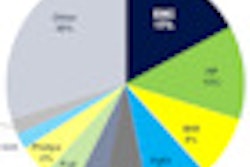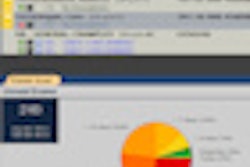Wednesday, December 1 | 12:45 p.m.-1:15 p.m. | LL-INS-WE1B | Lakeside Learning Center
Researchers from Nassau University Medical Center in East Meadow, NY, will examine in this poster presentation how the iPad might aid radiology.Believing that more use of teleradiology and remote interpretation is on the horizon, and that the concept of reading studies on a tablet from anywhere with 3G data service was worth exploring further, the researchers sought to evaluate the iPad's potential, said presenter Toshimasa Clark, MD.
They created an abstract model of the components required to view a study and generate a report, and then judged how the iPad would perform in handling the five components: display performance, network connectivity, DICOM visualization, report generation, RIS interface, and data security.
Based on their analysis, the researchers believe the iPad will find applications in radiology.
Tablet computing devices such as the iPad would allow a number of patient care benefits, including the ability for radiologists to review key images from CT, MRI, or ultrasound studies, Clark said. In addition, using a U.S. Food and Drug Administration (FDA)-cleared report-generation system on the iPad could be valuable in the academic radiology setting, allowing increased oversight by attending physicians, he said.
"If the ordering clinician requests an 'attending read' on an emergently performed study, an attending radiologist who is within the reach of the 3G cellular wireless data network could easily use an iPad to review cross-sectional study data, as well as review, edit, and possibly finalize the resident's preliminary report," Clark said.
Also, patient care in rural medicine could be improved by yielding decreased report-generation latency, he said.
"For hospitals where study volume does not warrant a radiologist to be physically present in the hospital during after-hours operation, the attending radiologist could review cross-sectional imaging studies and generate a preliminary impression report using an iPad within minutes of the study's completion, finalizing the report later after reviewing the study on a traditional teleradiology workstation," he told AuntMinnie.com.




















